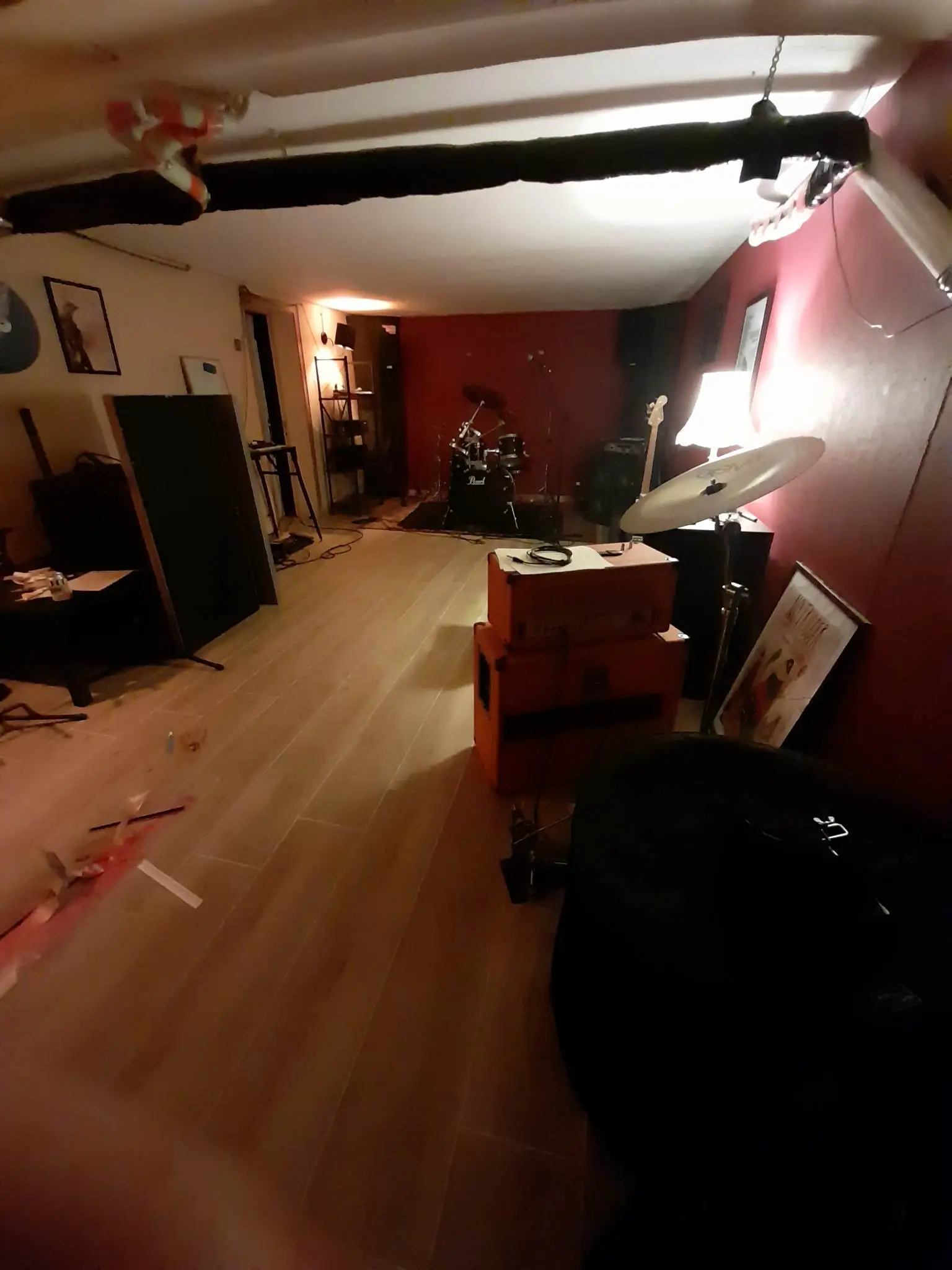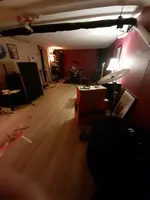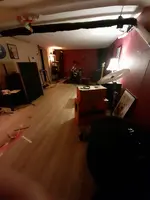manuel_vdn
New member
I've got a 2-room space in my basement which I transformed into a rehearsal/DIY studio. The small room is my studio setup, the big room (from which you see photos underneath) is the space where we rehearse with my bands. And where drums and guitars get recorded. The walls are all covered in OSB panels with behind it an air gap of 5cm (2 inches). The only other treatment I did was made myself some bass traps for the corners (which already made a huge difference).
What I want to do next is some more treatment (acoustic panels, diffusers,...). But I'm not sure where I need to put what exactly to make the biggest difference. These are the things that I want to improve in the future, I know not all can be solved entirely with only sound treatment. But some guidance and what treatment I should put where for which of these working points, would be a real big help.
1. Especially drums feel like they resonate and ring out long and loud.
2. In the room the balance between instruments sounds good, but when we do a quick recording of a jam with a Tascam DR05X. Cymbals are way more present than how we experience them live, should I treat the higher frequencies for this?
3. You can hear drums rather loud upstairs (don't think there's a lot to do about it, without building a room in a room?).
4. If we use distorted-effects on vocals, feedback happens rather quick, and it's hard to hear vocals over our drummer. So I should kill as much bouncing waves from the mics as possible, right? If yes, what is the best way to do that?
I was already thinking about hanging an acoustic curtain covering the entire wall behind the drums. And/or hanging some small acoustic panels or diffusers to the left and the right side of the drums. Would this be a good idea?
Here are some dimensions and pictures of the room.
Drums -> walls on the side: 110cm (43 inches)
Drums -> wall behind the drummer: 65cm (26 inches)
Drums -> ceiling: 80cm (31 inches)
Floor -> ceiling: 210cm (83 inches)
Width of the room: 400cm (157 inches)
Length of the room: 740cm (291 inches)




Thanks in advance, hope to learn some new stuff here and improve my room.
What I want to do next is some more treatment (acoustic panels, diffusers,...). But I'm not sure where I need to put what exactly to make the biggest difference. These are the things that I want to improve in the future, I know not all can be solved entirely with only sound treatment. But some guidance and what treatment I should put where for which of these working points, would be a real big help.
1. Especially drums feel like they resonate and ring out long and loud.
2. In the room the balance between instruments sounds good, but when we do a quick recording of a jam with a Tascam DR05X. Cymbals are way more present than how we experience them live, should I treat the higher frequencies for this?
3. You can hear drums rather loud upstairs (don't think there's a lot to do about it, without building a room in a room?).
4. If we use distorted-effects on vocals, feedback happens rather quick, and it's hard to hear vocals over our drummer. So I should kill as much bouncing waves from the mics as possible, right? If yes, what is the best way to do that?
I was already thinking about hanging an acoustic curtain covering the entire wall behind the drums. And/or hanging some small acoustic panels or diffusers to the left and the right side of the drums. Would this be a good idea?
Here are some dimensions and pictures of the room.
Drums -> walls on the side: 110cm (43 inches)
Drums -> wall behind the drummer: 65cm (26 inches)
Drums -> ceiling: 80cm (31 inches)
Floor -> ceiling: 210cm (83 inches)
Width of the room: 400cm (157 inches)
Length of the room: 740cm (291 inches)
Thanks in advance, hope to learn some new stuff here and improve my room.


